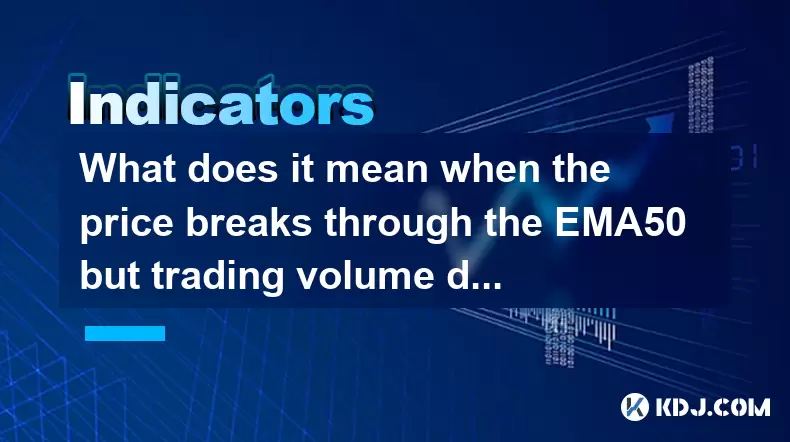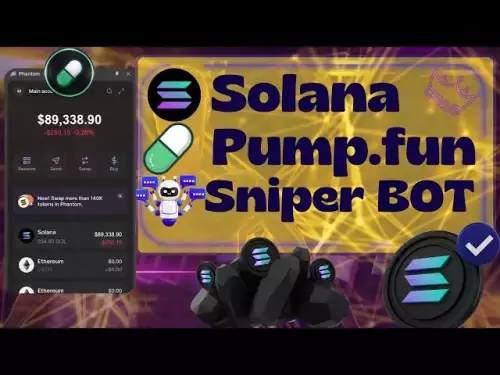-
 Bitcoin
Bitcoin $115100
-1.30% -
 Ethereum
Ethereum $4758
-1.70% -
 XRP
XRP $3.027
-2.19% -
 Tether USDt
Tether USDt $0.9998
-0.01% -
 BNB
BNB $883.2
-1.42% -
 Solana
Solana $204.0
2.62% -
 USDC
USDC $1.000
0.02% -
 Dogecoin
Dogecoin $0.2371
-0.97% -
 TRON
TRON $0.3612
-1.24% -
 Cardano
Cardano $0.9128
-2.19% -
 Chainlink
Chainlink $26.13
-3.93% -
 Hyperliquid
Hyperliquid $44.73
0.90% -
 Sui
Sui $3.715
-0.56% -
 Stellar
Stellar $0.4153
-2.41% -
 Ethena USDe
Ethena USDe $1.000
-0.04% -
 Bitcoin Cash
Bitcoin Cash $588.9
-2.06% -
 Avalanche
Avalanche $25.91
3.27% -
 Hedera
Hedera $0.2525
-1.45% -
 Litecoin
Litecoin $120.9
-1.35% -
 UNUS SED LEO
UNUS SED LEO $9.607
0.30% -
 Toncoin
Toncoin $3.382
-0.31% -
 Shiba Inu
Shiba Inu $0.00001329
-0.38% -
 Uniswap
Uniswap $11.38
-1.67% -
 Polkadot
Polkadot $4.222
2.83% -
 Aave
Aave $354.5
4.93% -
 Dai
Dai $0.0000
0.00% -
 Bitget Token
Bitget Token $4.704
-1.49% -
 Cronos
Cronos $0.1565
1.83% -
 Ethena
Ethena $0.7463
1.55% -
 Monero
Monero $265.8
-0.39%
What does it mean when the price breaks through the EMA50 but trading volume doesn't increase?
A price breakout above EMA50 without rising volume may signal weak momentum and potential false trend, especially in low-liquidity altcoin markets.
Aug 13, 2025 at 11:36 am

Understanding EMA50 and Its Role in Technical Analysis
The EMA50, or 50-period Exponential Moving Average, is a widely used technical indicator in cryptocurrency trading. It calculates the average price of an asset over the past 50 time periods—commonly 50 days on daily charts—with greater weight given to recent prices. This makes it more responsive to new information compared to a simple moving average. Traders use the EMA50 to identify the prevailing trend: when the price is above the EMA50, it typically signals a bullish trend, and when it’s below, a bearish trend may be forming.
A breakthrough of the EMA50 occurs when the price moves decisively above or below this moving average line. Such a move is often interpreted as a potential trend reversal or continuation signal. For instance, a price rising above the EMA50 may suggest strengthening bullish momentum, while a drop below could indicate bearish pressure. However, the reliability of this signal depends on confirmation from other indicators, especially trading volume.
The Significance of Trading Volume in Price Movements
Trading volume reflects the total number of shares or contracts traded during a given period and is a key measure of market activity. In cryptocurrency markets, volume provides insight into the strength behind a price move. A price breakout accompanied by high volume typically indicates strong conviction from market participants—buyers in an upward breakout or sellers in a downward one.
Conversely, when the price breaks through the EMA50 without a corresponding increase in volume, it raises concerns about the sustainability of the move. This scenario suggests that the breakout may lack broad market participation. It could be driven by limited buying or selling pressure, algorithmic trading, or even market manipulation in low-liquidity environments common in smaller altcoins.
Interpreting a Low-Volume Breakout Through EMA50
When the price breaches the EMA50 but volume remains flat or declines, it often points to a lack of conviction among traders. This divergence between price and volume can be analyzed through the lens of market psychology. For example:
- False breakout: The price may briefly cross the EMA50 due to a short-term spike, such as news-driven volatility, but without sustained interest from traders, the move fails to continue.
- Weak trend confirmation: Even if the price closes above or below the EMA50 for a session, the absence of volume suggests that large players—such as institutional investors or whales—are not actively participating.
- Potential reversal setup: In some cases, a low-volume breakout can precede a reversal, especially if the price quickly retracts back across the EMA50.
Traders should treat such signals with caution and avoid entering positions based solely on the EMA50 crossover without volume confirmation.
How to Analyze and Respond to This Scenario
To properly assess a price break through the EMA50 without volume support, traders should follow a structured analytical approach. The following steps can help determine whether the move is credible:
- Compare current volume to average volume: Use a volume oscillator or simply observe the volume bars on your chart. If the breakout occurs on volume below the 20-day average, it may lack strength.
- Check for divergence on volume indicators: Tools like the On-Balance Volume (OBV) or Volume Weighted Average Price (VWAP) can reveal whether volume is supporting the price action. A flat or declining OBV during a price rise above EMA50 is a red flag.
- Examine candlestick patterns: Look for long wicks, small bodies, or engulfing patterns around the breakout candle. A long upper wick after breaking above EMA50 may indicate rejection.
- Monitor price behavior after the breakout: If the price fails to hold above or below the EMA50 in the following 1–3 candles, it reinforces the idea of a weak move.
Avoid placing trades immediately after the breakout. Instead, wait for price retest with volume confirmation—for example, a pullback to the EMA50 that holds with rising volume—before considering an entry.
Practical Example Using a Cryptocurrency Chart
Consider a scenario on the BTC/USDT daily chart. Bitcoin’s price closes above the EMA50 after several days of consolidation. However, the volume bar for that day is shorter than the previous five days’ average. Here’s how to interpret and act:
- Step 1: Identify the EMA50 crossover—note the exact close price and date.
- Step 2: Overlay a volume histogram and compare the breakout day’s volume to the 10-day and 20-day averages.
- Step 3: Check the OBV indicator—if it’s flat or declining while price rises, it confirms weak participation.
- Step 4: Watch the next 2–3 days: if price retreats below EMA50 on high volume, the breakout failed. If it consolidates above EMA50 with gradually increasing volume, the trend may gain legitimacy.
Using TradingView or Binance’s advanced charting tools, you can apply these indicators simultaneously. Click on “Indicators” > search “EMA” > set period to 50. Then add “Volume” and “OBV” from the same menu. Adjust the chart to candlestick mode and set the time frame to daily for this analysis.
Strategies to Mitigate Risk in Low-Volume Breakouts
Given the uncertainty of low-volume EMA50 breakouts, risk management becomes crucial. Traders can employ several tactics to protect capital:
- Use tighter stop-loss orders: Place stops just below the breakout candle’s low (for long positions) or above its high (for shorts) to limit exposure.
- Avoid full position entry: Enter with a partial position and wait for volume confirmation before adding more.
- Combine with other indicators: Use RSI, MACD, or support/resistance levels to strengthen the analysis. For instance, a breakout above EMA50 near a key resistance level without volume is especially suspect.
- Set price-based confirmation rules: Only consider the breakout valid if the price closes above EMA50 for two consecutive periods with rising volume.
These strategies help filter out noise and reduce the likelihood of being caught in false breakouts.
Frequently Asked Questions
Can a price break through EMA50 on low volume and still be valid?
Yes, but it’s rare. Some breakouts occur during low-liquidity periods (e.g., weekends) and gain volume later. The key is follow-through—if volume increases in subsequent sessions and price maintains its position relative to EMA50, the breakout may still be valid.
How do I calculate average trading volume for comparison?
On most charting platforms, you can apply a moving average to the volume indicator. For example, add a 20-period simple moving average to the volume bars. This creates a baseline to compare current volume against.
Does this scenario differ between Bitcoin and altcoins?
Yes. Bitcoin, being more liquid, typically requires significant volume for sustained breakouts. Altcoins, especially low-cap ones, can experience sharp price moves on minimal volume due to lower market depth, making volume analysis even more critical.
What time frames are most reliable for observing EMA50 and volume divergence?
Daily and 4-hour charts provide the most reliable signals. Lower time frames like 5-minute charts are prone to noise and whipsaws, making volume interpretation less dependable.
Disclaimer:info@kdj.com
The information provided is not trading advice. kdj.com does not assume any responsibility for any investments made based on the information provided in this article. Cryptocurrencies are highly volatile and it is highly recommended that you invest with caution after thorough research!
If you believe that the content used on this website infringes your copyright, please contact us immediately (info@kdj.com) and we will delete it promptly.
- Whitelist Frenzy: Is This the Top Meme Coin of 2025?
- 2025-08-24 08:45:22
- Ruvi AI: The AI Token Igniting a Cardano-esque Rally?
- 2025-08-24 07:45:12
- Altcoins in a Market Dip: Is Polygon (MATIC) Poised for a Reversal?
- 2025-08-24 07:05:13
- Crypto, Pepe, and Investment: Navigating the Meme Coin Mania in 2025
- 2025-08-24 06:45:29
- VanEck's JitoSOL ETF: A New Era for Solana and Institutional Crypto
- 2025-08-24 07:45:12
- Dogecoin, Shiba Inu, and the Rise of New Crypto Contenders
- 2025-08-24 08:05:30
Related knowledge

What does it mean when the +DI and -DI cross frequently in the DMI indicator but the ADX is flattening?
Aug 11,2025 at 03:15am
Understanding the DMI Indicator ComponentsThe Directional Movement Index (DMI) is a technical analysis tool composed of three lines: the +DI (Positive...

What does the sudden appearance of a "dark cloud cover" candlestick pattern during an uptrend indicate?
Aug 13,2025 at 11:35am
Understanding the 'Dark Cloud Cover' Candlestick PatternThe dark cloud cover is a bearish reversal pattern in technical analysis that typically appear...

What does it mean when the moving average, MACD, and RSI all send buy signals simultaneously?
Aug 11,2025 at 01:42pm
Understanding the Convergence of Technical IndicatorsWhen the moving average, MACD, and RSI all generate buy signals at the same time, traders interpr...

What does it mean when both the KDJ indicator and the RSI show overbought signals simultaneously?
Aug 13,2025 at 11:35am
Understanding the KDJ Indicator in Cryptocurrency TradingThe KDJ indicator is a momentum oscillator derived from the Stochastic Oscillator, widely use...

What does it mean when the price is trading above the SAR indicator but the red dots are densely packed?
Aug 09,2025 at 11:49pm
Understanding the SAR Indicator and Its Visual SignalsThe SAR (Parabolic Stop and Reverse) indicator is a technical analysis tool used primarily to de...

What does it mean when the candlestick chart forms a "Morning Star" but trading volume is sluggish?
Aug 12,2025 at 06:28pm
Understanding the Morning Star Candlestick PatternThe Morning Star is a three-candle bullish reversal pattern commonly observed in cryptocurrency pric...

What does it mean when the +DI and -DI cross frequently in the DMI indicator but the ADX is flattening?
Aug 11,2025 at 03:15am
Understanding the DMI Indicator ComponentsThe Directional Movement Index (DMI) is a technical analysis tool composed of three lines: the +DI (Positive...

What does the sudden appearance of a "dark cloud cover" candlestick pattern during an uptrend indicate?
Aug 13,2025 at 11:35am
Understanding the 'Dark Cloud Cover' Candlestick PatternThe dark cloud cover is a bearish reversal pattern in technical analysis that typically appear...

What does it mean when the moving average, MACD, and RSI all send buy signals simultaneously?
Aug 11,2025 at 01:42pm
Understanding the Convergence of Technical IndicatorsWhen the moving average, MACD, and RSI all generate buy signals at the same time, traders interpr...

What does it mean when both the KDJ indicator and the RSI show overbought signals simultaneously?
Aug 13,2025 at 11:35am
Understanding the KDJ Indicator in Cryptocurrency TradingThe KDJ indicator is a momentum oscillator derived from the Stochastic Oscillator, widely use...

What does it mean when the price is trading above the SAR indicator but the red dots are densely packed?
Aug 09,2025 at 11:49pm
Understanding the SAR Indicator and Its Visual SignalsThe SAR (Parabolic Stop and Reverse) indicator is a technical analysis tool used primarily to de...

What does it mean when the candlestick chart forms a "Morning Star" but trading volume is sluggish?
Aug 12,2025 at 06:28pm
Understanding the Morning Star Candlestick PatternThe Morning Star is a three-candle bullish reversal pattern commonly observed in cryptocurrency pric...
See all articles

























































































